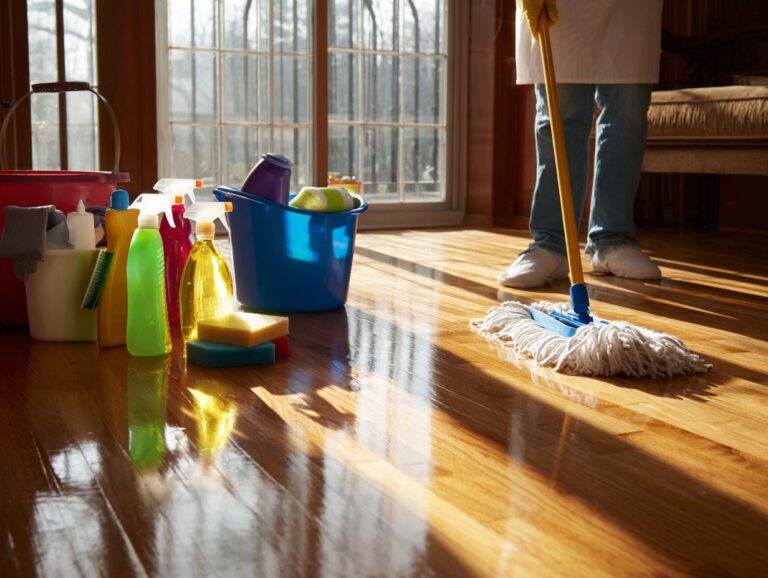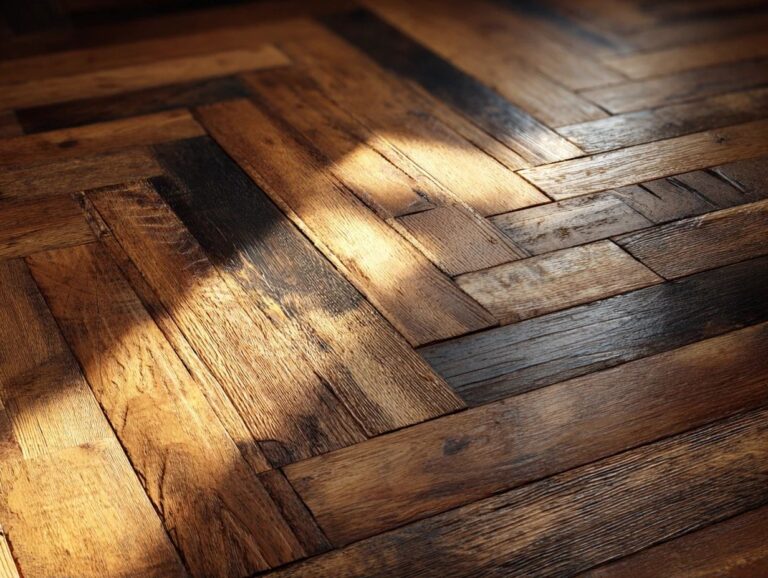Tile and Grout Cleaning – Professional Techniques
Contents
- Introduction to Tile and Grout Cleaning
- Types of Tile and Grout
- Common Issues with Tile and Grout
- Professional Cleaning Techniques
- Preparation for Cleaning
- Post-Cleaning Care and Maintenance
- Tile and Grout Cleaning Industry Overview
- Frequently Asked Questions
- What are some benefits of hiring a professional for tile and grout cleaning?
- What should I expect during a professional tile and grout cleaning service?
- How often should I have my tile and grout professionally cleaned?
- What types of tile and grout can be cleaned with professional techniques?
- Can professional tile and grout cleaning remove stubborn stains and discoloration?
- Is professional tile and grout cleaning worth the cost?
Introduction to Tile and Grout Cleaning
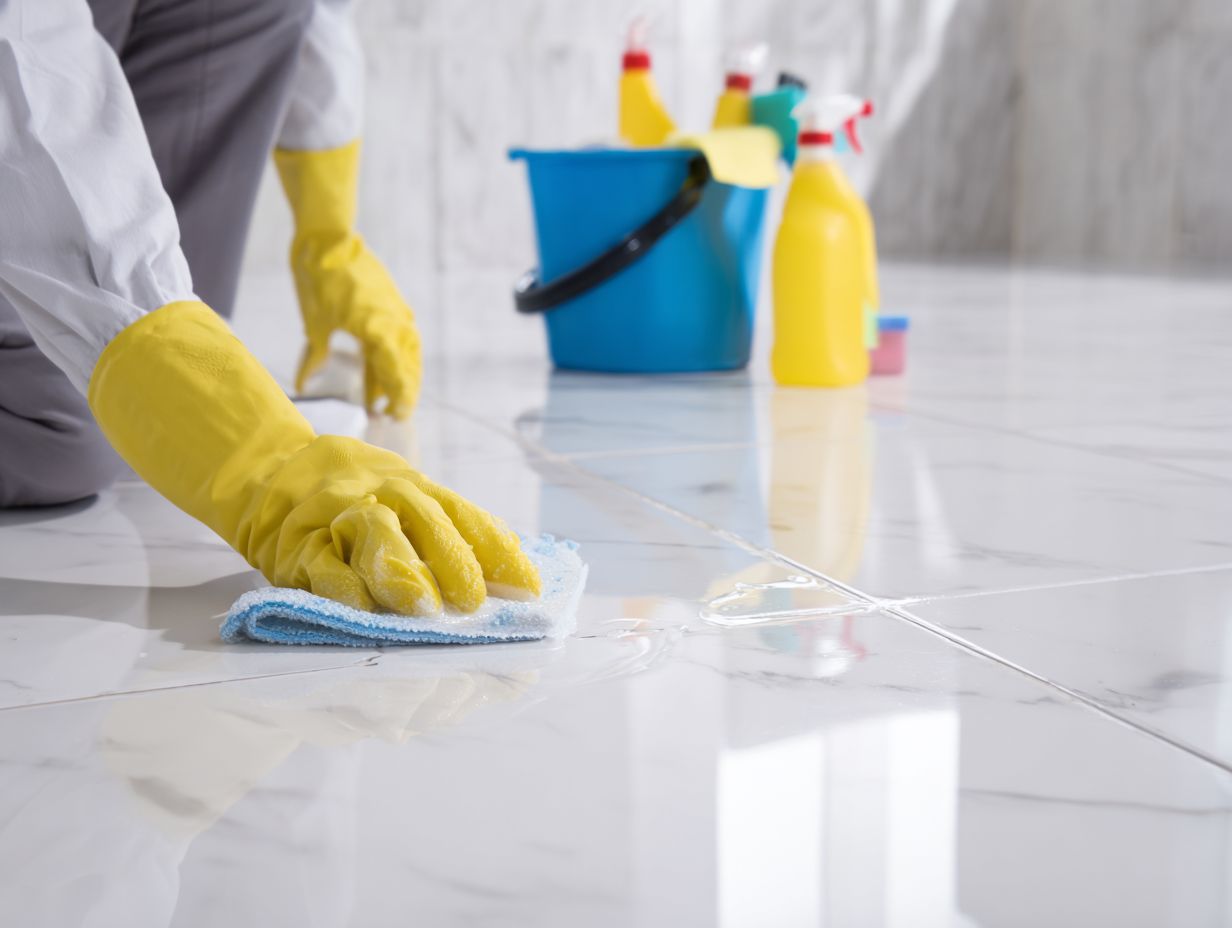
Key Takeaways:
Importance of Tile and Grout Maintenance
Regular cleaning of tile and grout lowers bacteria and mold growth, improving home cleanliness.
Research shows that clean grout can lower mold exposure by up to 40%, significantly improving indoor air quality.
For effective grout cleaning, combine baking soda with vinegar, and use an old toothbrush to scrub. Consider commercial products like Zep Grout Cleaner or Tilex, which are specifically designed to inhibit bacteria growth.
For long-term protection, applying a grout sealer each year can help repel moisture and stains, maintaining a healthier home environment throughout the year (our guide to tile floor crack repair provides additional insights on maintaining your flooring’s integrity).
Overview of Professional Techniques
Professional tile and grout cleaning employs advanced techniques and equipment that deliver results beyond standard home cleaning methods.
Methods such as steam cleaning and high-pressure washing are commonly used. Steam cleaning penetrates deep into porous surfaces, effectively eliminating dirt and bacteria, while high-pressure washing blasts away grime and stains quickly.
Utilizing services like Zerorez offers the added benefit of eco-friendly solutions, ensuring that your family and pets are safe from harsh chemicals. These professionals have the knowledge needed to keep your flooring in good condition, often leading to cleaner floors that last longer than if you cleaned them yourself.
Types of Tile and Grout
Knowing the different types of tile and grout can help you pick the correct cleaning methods and products. For instance, understanding how different flooring types handle water and chemicals can significantly impact your cleaning choices. Explore our expert opinion on handling water and chemicals in laundry room flooring for more insights.
Ceramic and Porcelain Tiles
Ceramic and porcelain tiles are popular for their durability but require specific cleaning methods to avoid damage.
To keep your tiles looking good and avoid damage, regularly vacuum to get rid of dirt and small particles that can scratch them.
For deeper cleaning, use a pH-balanced cleaner specifically designed for ceramic or porcelain. Avoid harsh chemicals, as they can deteriorate the finish over time.
A damp mop works well for routine upkeep, while for tougher stains, a soft-bristle brush and the same pH-balanced cleaner can help restore the tiles without causing harm.
Natural Stone Tiles
Natural stone tiles, known for their aesthetic appeal, necessitate special care to prevent damage and maintain their integrity.
To clean natural stone effectively, use gentle solutions. A blend of baking soda and water creates a gentle cleaning paste, and watered-down vinegar can remove stains without harming the surface.
For routine maintenance, employ a pH-neutral cleaner designed specifically for stone. Use a quality sealant every 1-3 years to protect against stains and moisture, and to keep your tiles in excellent condition for many years.
Regularly sweep and mop with non-abrasive materials to keep them looking pristine.
Grout Types and Their Properties
Different grout types-such as sanded, unsanded, and epoxy-offer distinct durability and maintenance needs.
Grout with sand is best for wider gaps and tends to crack less, but it can stain more easily, so it’s important to seal it often.
Unsanded grout is better for small gaps and is usually simpler to clean, but it can get stained more easily and needs careful upkeep.
Epoxy grout is very resistant to stains and lasts a long time, which is why many people use it in kitchens and bathrooms. However, it can be difficult to use, and you often need specific cleaning products, like those without ammonia, to avoid damage.
For consistent upkeep, always test any cleaning method on a small area first.
Common Issues with Tile and Grout
Many homeowners face frequent problems with tiles and grout that can affect how clean and nice their homes look.
Stains and Discoloration
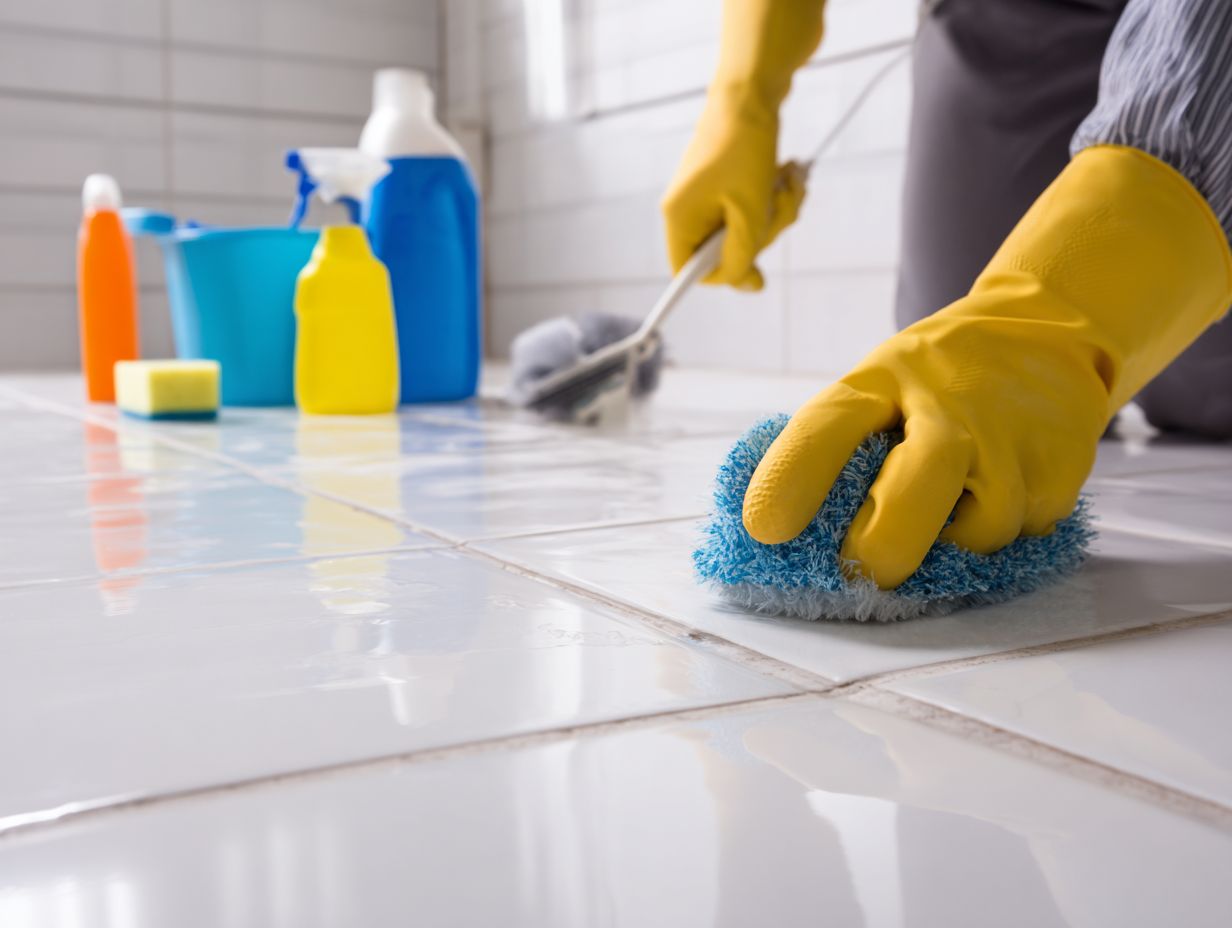
Stains and discoloration on tiles and grout can significantly impact a home’s aesthetic appeal.
To tackle tough stains effectively, start by identifying the type of stain.
- Mix baking soda with water to form a paste to treat food stains. Spread it on the stain and scrub it after 10 minutes.
- Oil stains respond well to cornstarch; sprinkle it on, let it absorb for 15 minutes, and then vacuum.
- For mold or mildew, use hydrogen peroxide-apply it, let it sit for 30 minutes, and then scrub with a brush.
Using a sealant on grout often prevents stains, making it easier to clean and improving its appearance.
Mold and Mildew Growth
Mold and mildew growth in grout lines poses serious health risks and can lead to structural damage if not addressed quickly.
To prevent mold growth, regularly clean grout with a mixture of water and vinegar, which effectively kills mold spores. Think about using a special anti-mold sealant after cleaning to stop mold from coming back.
Statistically, exposure to mold can cause respiratory issues for up to 20% of the population, leading to conditions like asthma or allergic reactions.
If mold is already present, use products like Mold Armor or Concrobium Mold Control, which can eliminate the mold without harsh chemicals. Dealing with these problems quickly will protect your health and home.
Cracks and Damage
Fix cracks in grout quickly to stop more damage and keep the surface in good condition.
To inspect grout for damage, run your fingers along the joints; look for crumbling or discoloration.
For grout repair, you’ll need a high-quality grout repair kit, which typically includes a caulk tube, a scraper, and matching grout.
- Start by cleaning the affected area thoroughly, removing any loose material.
- Next, apply the new grout smoothly with a caulk tube, ensuring it fills all gaps.
- Finish by smoothing the surface for a clean finish.
Check your grout twice a year to find problems early and keep your surfaces in good condition.
Professional Cleaning Techniques
Professional cleaning methods use advanced tools to thoroughly clean and refresh tile and grout.
Steam Cleaning
Steam cleaning uses high-pressure steam to remove dirt and germs, providing a cleaning method without chemicals.
To effectively steam clean tiles and grout, consider using machines like the Bissell PowerFresh or the Shark Genius. Both are designed for easy maneuverability and quick heating.
Start by sweeping or vacuuming the area to remove loose dirt. Then, fill the steam cleaner with water and allow it to heat up, which usually takes just a few minutes.
Use the suggested attachments to handle grout lines, as the strong pressure both cleans and eliminates mold and bacteria. This method typically requires only one hour for most kitchens or bathrooms, ensuring a fast and efficient process.
High-Pressure Water Cleaning
High-pressure water cleaning is a powerful method for removing tough stains and deep-seated dirt from tiles and grout.
This method is particularly effective on outdoor surfaces like patios, driveways, and brick walkways. It requires caution; you should avoid using high pressure on delicate materials such as wood or painted surfaces, as they can get damaged.
Always wear protective gear, including goggles and gloves, to shield against flying debris. For best results, consider hiring a professional service, especially for extensive projects. They use modern tools to clean completely and keep your property safe.
Chemical Cleaning Solutions
Chemical cleaning solutions can handle tough stains, but choose them carefully to prevent damage.
For tough stains like grease, a bleach solution can be effective. For a safer option, use white vinegar or baking soda to eliminate odors.
If you’re dealing with wine or berry stains, consider products like OxiClean MaxForce, which specifically targets organic stains. Always spot test these cleaners on inconspicuous areas first and use gloves for protection, especially with harsher chemicals.
Note that combining cleaners can be dangerous; avoid mixing bleach with ammonia, as it creates toxic fumes.
Choose based on the stain type and safety preference.
Manual Scrubbing Techniques
Manual scrubbing remains a reliable method for maintaining clean tile and grout, especially in hard-to-reach areas.
To make manual scrubbing effective, use stiff brushes with nylon bristles, which penetrate grout lines without damaging the tile surface.
To clean, combine baking soda and water to create a thick paste. This mixture can effectively remove tough stains and is environmentally friendly. Alternatively, a commercial grout cleaner can provide more intense results-look for one containing hydrogen peroxide.
Apply your chosen solution, let it sit for 10-15 minutes, and then scrub in a circular motion for optimal results.
Rinse thoroughly to reveal the refreshed surface.
Preparation for Cleaning
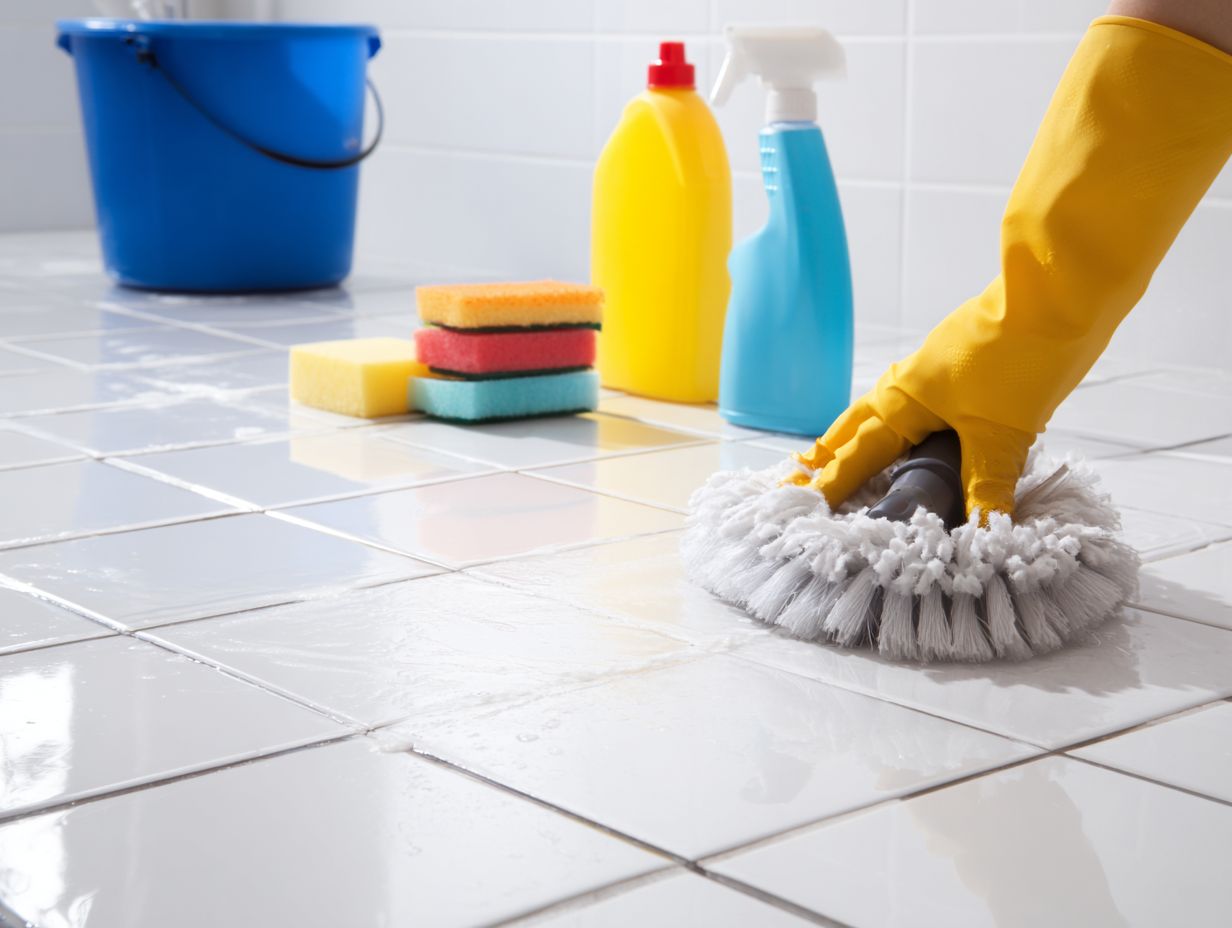
Getting tile and grout clean requires good preparation for the best results.
Assessing the Condition of Tile and Grout
Regular assessments of tile and grout condition can help identify issues before they escalate to costly repairs.
To inspect tile and grout, start by checking for visible cracks and discoloration. Look for loose tiles, which may indicate underlying moisture issues. Assess grout lines for missing or crumbling material.
- Do these inspections twice a year to find issues early.
- For deeper cleaning, consider using a grout cleaner or a steam cleaner.
Tools like a stiff brush or an electric scrubber can help restore the appearance and integrity of grout. If you see stubborn stains or damage, contact an expert to fix them.
Gathering Necessary Tools and Supplies
Using the correct tools is important for effective tile and grout cleaning.
Invest in a steam cleaner, which can be purchased at major retailers like Home Depot or online through Amazon.
Pick environmentally safe cleaning products such as vinegar or baking soda. They are safe and work well.
For scrubbing, a stiff-bristle brush will help dislodge dirt and grime effectively; brands like OXO offer sturdy options. You should also consider a grout brush for detailed cleaning, commonly available at local hardware stores.
With these tools, routine maintenance becomes much easier and more efficient.
Post-Cleaning Care and Maintenance
Looking after your tile and grout once cleaned helps them stay attractive over time.
Sealing Grout Lines
Sealing grout lines creates a protective barrier against stains and moisture, extending the lifespan of grout.
To effectively seal grout lines, begin by cleaning the area with a grout cleaner like Aqua Mix Grout Deep Cleaner. After the grout dries completely (usually 24 hours), apply a quality sealer such as Aqua Mix Grout Sealer or Miracle Sealants 511 Impregnator.
Use a small brush or foam applicator for even coverage. Let the sealer dry for at least 30 minutes before adding another layer.
For homes with frequent usage, apply new sealer to your grout every 1-2 years. In busy areas, think about doing it annually.
Regular Cleaning Practices
Establishing regular cleaning practices can significantly reduce the buildup of dirt and mildew in grout lines.
To maintain tile and grout cleanliness, consider a routine cleaning schedule. Clean places that are used often once a week. Clean areas that are used less often every two weeks or once a month.
Use a simple DIY solution of equal parts water and white vinegar for effective cleaning. To remove tough stains, combine baking soda with water to make a paste and put it directly on the grout to clean it well.
Put a sealant on the grout every six months to prevent moisture from absorbing and make cleaning easier. Regular cleaning keeps your home clean and healthy.
Benefits of Professional Tile and Grout Cleaning
Hiring experts to clean tile and grout helps surfaces to last longer and improves hygiene.
Regular professional cleaning can extend the life of your tiles and minimize wear from debris and bacteria.
For example, utilizing a high-pressure steam cleaner, professionals can effectively remove dirt and stains that regular mopping can miss.
Hiring a professional can save you time and effort, typically costing between $0.50 to $1.50 per square foot, depending on location and size of the area.
Some services apply a protective sealant after cleaning to make surfaces last longer and save money by stopping damage later on.
Tile and Grout Cleaning Industry Overview
Tile and Grout Cleaning Industry Overview
Market Growth Projections: United States Tile and Grout Cleaning Service Market
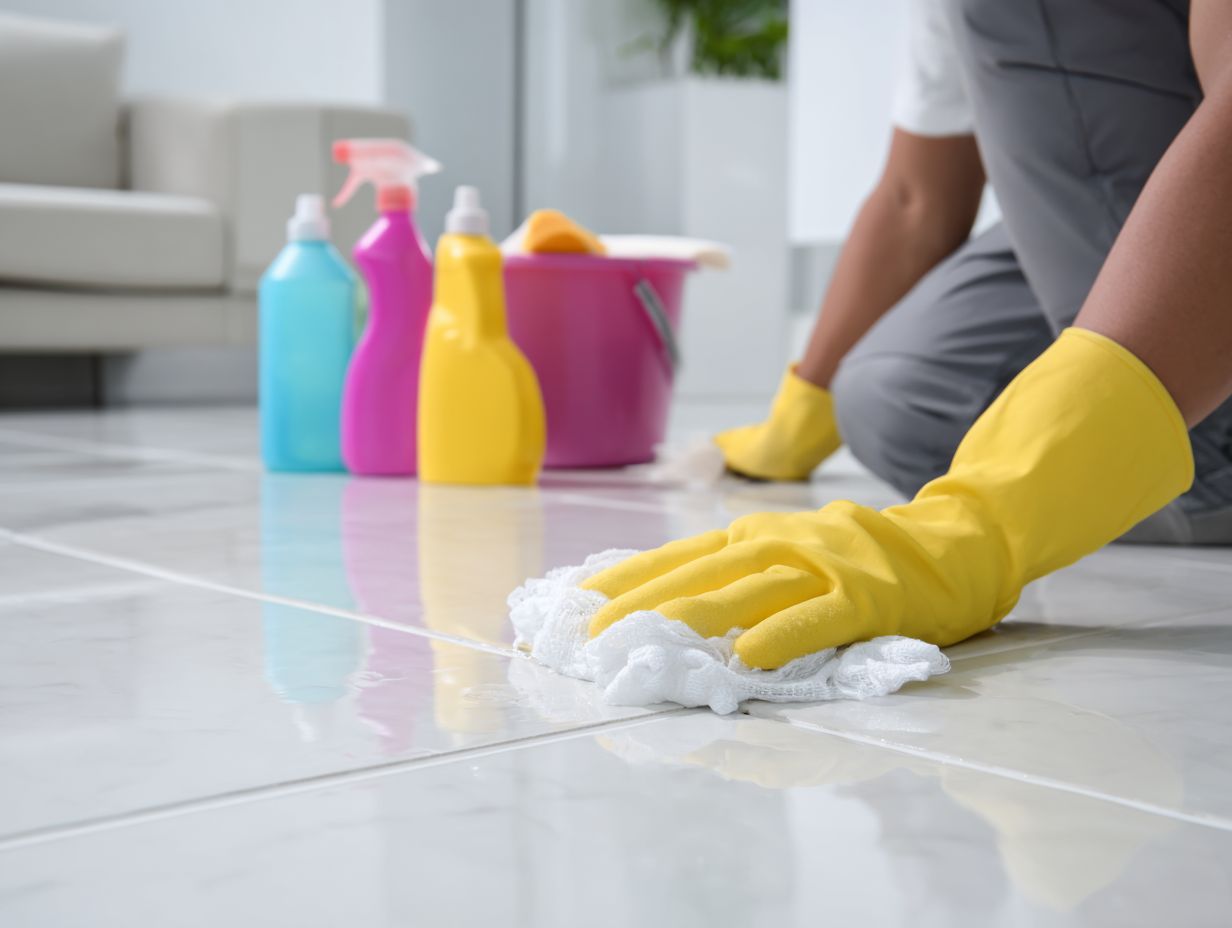
Market Growth Projections: Global Tile Cleaner Market
The Tile and Grout Cleaning Industry Overview provides a detailed analysis of market growth projections for both the United States and the global tile cleaner market. This data highlights the increasing demand and promising financial opportunities within the industry.
Market Growth Projections indicate a significant upward trend in tile and grout cleaning services in the U.S. The market value in 2024 is projected at $900 million, with expectations to reach $1.6 billion by 2033. This growth is driven by an anticipated compound annual growth rate (CAGR) of 8.6% from 2026 to 2033, showcasing robust expansion. Factors contributing to this growth include increased consumer awareness of hygiene, aesthetic maintenance, and the rise of tile installations in residential and commercial buildings.
- Global Market Insights: The global tile cleaner market stands at $2.8 billion in 2023, with projections to grow to $4.2 billion by 2032. A CAGR of 4.5% from 2023 to 2032 signifies steady global demand. This increase is due to more people moving to cities, changing habits that focus on hygiene, and new cleaning technologies that save time and are good for the environment.
The U.S. market’s rapid expansion compared to the global rate suggests significant local opportunities for businesses. Business owners and well-known firms can benefit from this growth by providing focused services, putting money into new technologies, and increasing their market presence to meet changing customer tastes.
The Tile and Grout Cleaning Industry Overview conveys a hopeful environment for both local and global markets, highlighting the need for careful planning and adjusting to stay competitive and take advantage of the new opportunities these forecasts present.
Final Tips for Homeowners
Using good cleaning methods can greatly improve how tile and grout look and last.
- Start by creating a regular cleaning schedule that includes sweeping or vacuuming to remove dirt and debris. For deeper cleans, use a mixture of warm water and a few drops of pH-neutral cleaner.
- Consider investing in a steam cleaner for tough stains-these tools can sanitize and lift grime without harsh chemicals.
- Apply a grout sealer every six to twelve months to protect from moisture and stains. Set alerts on your phone or calendar to help you regularly complete these maintenance tasks.
Frequently Asked Questions
What are some benefits of hiring a professional for tile and grout cleaning?
Using professional methods for cleaning tile and grout can result in a complete and effective cleaning, leaving your home cleaner and healthier. Professionals also have access to specialized tools and products that can achieve better results than DIY methods.
What should I expect during a professional tile and grout cleaning service?
Typically, a professional will start by pre-treating any heavily soiled or stained areas. Then, they will use high-pressure steam and specialized cleaning solutions to deep clean the tile and grout. Afterward, they may use a sealant to protect and prolong the cleanliness of the surfaces.
How often should I have my tile and grout professionally cleaned?
The frequency of professional cleaning will depend on the level of foot traffic and amount of spills and stains on your tile and grout. It is suggested to get a thorough cleaning every 1-2 years, along with regular upkeep to keep surfaces in good condition.
What types of tile and grout can be cleaned with professional techniques?
Professional cleaning techniques can be used on a variety of surfaces, including ceramic, porcelain, marble, travertine, and more. However, you should talk to a professional to use the right methods for your type of tile and grout.
Can professional tile and grout cleaning remove stubborn stains and discoloration?
Yes, professional techniques can effectively remove tough stains and discoloration from tile and grout. However, removing stains can also be affected by how old and severe the stain is, and the kind of tile and grout being cleaned.
Is professional tile and grout cleaning worth the cost?
While the cost of professional cleaning may vary, it is often a worthwhile investment for the long-term health and appearance of your tile and grout. It saves you time and effort, makes your surfaces last longer, and keeps your home cleaner.


